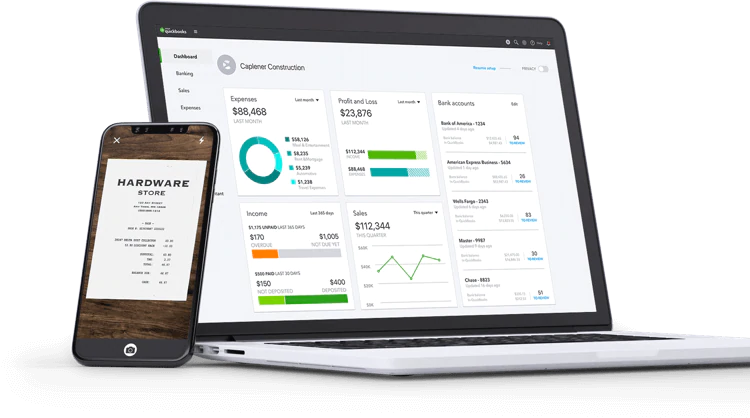QuickBooks users track the entire business accountancy in one place accurately. Along with its amazing features, you have many integrated applications to make things easy and simple. Payroll is one of the best-integrated applications where you can track the paycheck and entire status of your employees. You have a choice to run with its advanced features to control the process anytime, anywhere. This article will help you to know about the Payroll tax journal entry QuickBooks to reduce human efforts.
Overview of Payroll Tax Journal Entry
Journal entry is the best way to enter the payroll in the QuickBooks accounting software. Users need to set up a “Memorized Transaction” with proper guidance. Now, you need to enter a payroll just by utilizing the memorized transaction you just generated. It is beneficial to track all totals in one place. There is no way to enter the data on automated mode. Users have to enter the payroll paychecks manually in the QuickBooks to navigate the total payments. Ensure that journal entries want the complete details about the credit and debit card.
Learn, How to Make a Payroll Tax Journal Entry with the Following Steps:
Step 1: Create your Manual Tracking Accounts with the given steps:
To create new accounts in the chart of accounts to navigate the payroll expenses and liabilities. After creating these expense accounts, click on the “Ëxpenses” as an account type
- Account types are listed below
- Payroll Expenses: Taxes
- Payroll Expenses: Wages
- To create the liability accounts, choose liabilities as account type:
- Payroll Liabilities: Federal Taxes
- Payroll Liabilities: Federal Unemployment
- All the given accounts cover almost all types of common payroll tax situations. You might need to make additional accounts taxes for your country.
Step 2: You Need to Enter the Payroll Paychecks into the QuickBooks
- After paying your employees outward of the QuickBooks, make a journal entry
- Easily get your Employees Payroll reports from the payroll services
- Click on the Select + New simultaneously
- Choose the “Journal Entry”
- From the available preferences, you have to enter the Paycheck date.
In any case, if you navigate the paycheck number then fill it in the journal number field. You can prefer the data from the payroll report to make the journal entry. If you already have many employees for the paid time, you can add all paychecks calculations in one journal entry. You have a choice to separate the journal entries for every employee if you want to break out the information.
Add Gross wages with the below steps:
- Choose Payroll Expenses: Wages specified for the account
- Fill the amount as a debit
Sum up employer payroll taxes
- Choose the payroll expenses: Taxes specified for the account
- Fill the amount as a debit
Sum Up the taxes paid
- Choose Payroll liabilities: Federal taxes for the account
- Fill the amount as a credit
Sum up the state unemployment insurance taxes, add state income taxes, add federal unemployment taxes.
To add net wages, perform the below steps:
- Choose the “Checking Account” that you are paying your workers from
- To sum up together, with every individual paycheck on distinct lines
- Fill the amount as the credits
Types of Payroll Tax Journal Entry in QuickBooks
The aim of payroll accounting is to navigate employee compensation and all related payroll expenses. Recording these expenses provides a clear vision of their expenses. Payroll accounting offers all possible ways to track the five essential payroll-related expenses functions.
- Taxes withheld from the employee paychecks – You can track the social security, health insurances, federal income taxes, and accessibility for the local or state income taxes.
- Employee Compensation – Make it easy to track the wages, salaries, paid time off, and all related taxable income reported on the Form W-2 at the end of the year
- Employer taxes – Updates employees taxes on-time and provide access to your employees
- Government-Mandated deduction – Stay with the latest updates on the payroll accounting both. It helps you to get the latest knowledge of financial processing and government tax policies.
- Paycheck deductions for benefits – Update and manage the employer-provided retirement plan.
To set up the payroll-related accounts, you need all expenses and liabilities such as Payroll taxes payable, employee compensation, employer taxes and insurances, and all benefits. Acquire required paperwork from the new employees and sums up all names to the accounting Record QuickBooks Payroll Tax Refund.
Generally, the Paperwork Contains three forms:
- Form I-9, Employment Eligibility Verification form
- Form W-4, federal withholding form
- State withholding form, if accessible
Easy to calculate the taxes and all other deductions depend on the compensation – All deductions and taxes are dependent upon the forms that your employees fill out. Valuation depends on your state and country’s policies.
Easy to record the Payroll checks – In the journal entry, you can easily record all deductions from the employee’s check. They offer you a clear vision of your employees to locate deductions on their pay stubs and record the tax payment issues.
Conclusion
Hopefully, the above information was useful to know about the Payroll tax journal entry QuickBooks. If you need any kind of assistance or advice, do QuickBooks Live Chat Support with QB Technical expertise (Link is given at the right corner of the website). For instant help, dial QuickBooks helpline number 1-844-640-1481. The team of the QuickBooks expertise provides 24/7 availability service to resolve your all unresolved queries.






